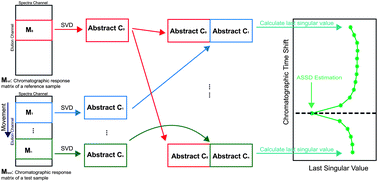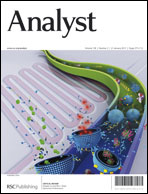A novel chromatographic peak alignment method coupled with trilinear decomposition for three dimensional chromatographic data analysis to obtain the second-order advantage
Abstract
The alignment of chromatographic peaks and deconvolution of overlapped peaks still remain challenges in the field of complex sample analysis. In this paper, we highlight a strategy that employs a new time shift alignment method derived from the well-known Rank Minimization method for aligning chromatographic peak shifts among samples and then uses trilinear


 Please wait while we load your content...
Please wait while we load your content...